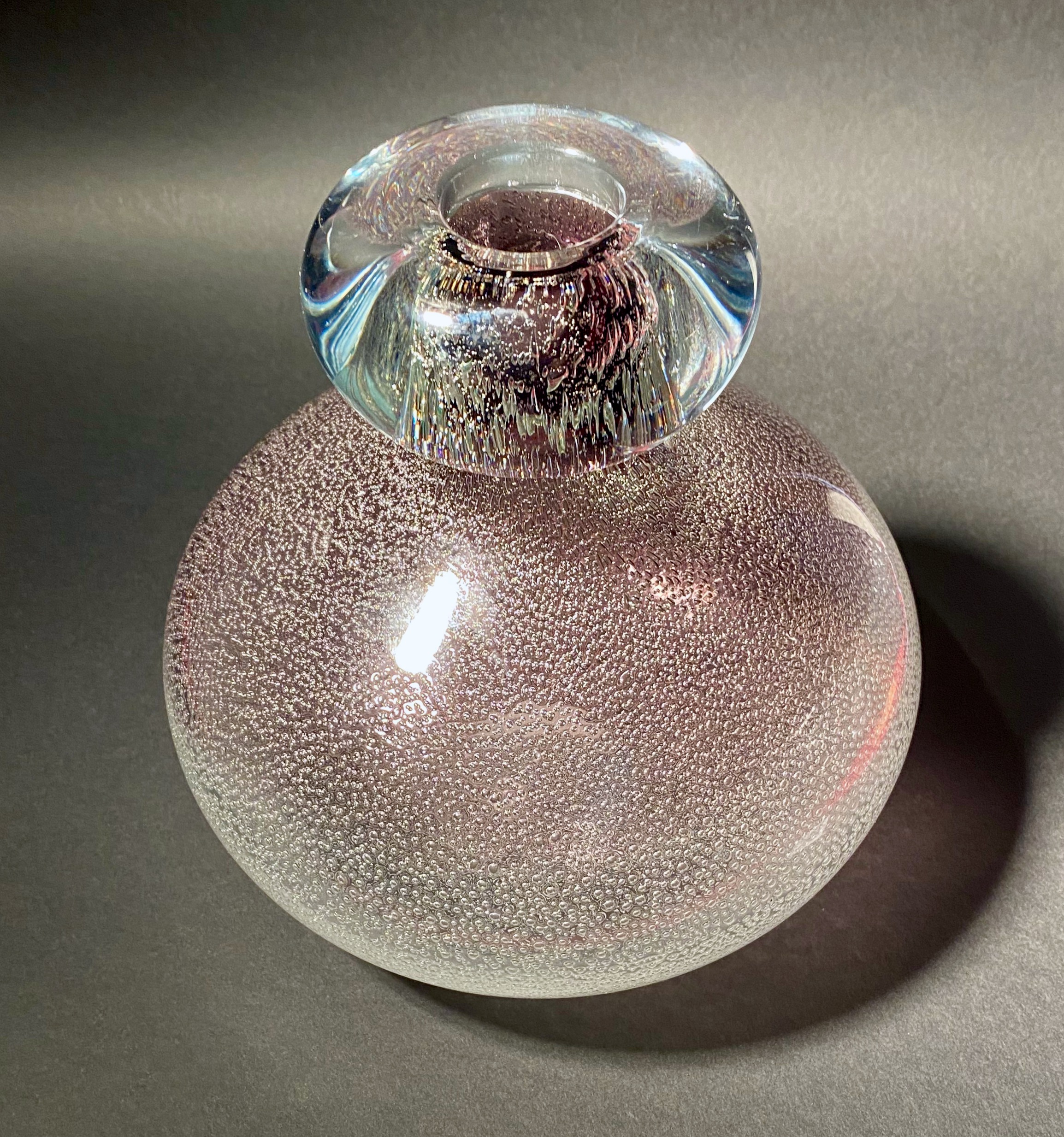

Title: Hand Blown Contemporary Designer Display Art Glass
Shipping: $29.00
Artist: N/A
Period: Contemporary
History: Art
Origin: North America > United States
Condition: N/A
Item Date: N/A
Item ID: 531
A stunning and spectacular piece of art glass, this hand-blown contemporary designer display is truly captivating. The glass features uniform, delicate bubbles throughout its base, adding to its allure. It functions wonderfully as a displayed flower vase, exuding an air of Venetian craftsmanship, although its origins are not entirely certain. In its day, this piece would have commanded a premium price. This discovery is indeed exciting. Dimensions: 7" tall 7 1/2" inches wide
The history of contemporary handblown glass from 1900 to the present day is a tale of innovation, experimentation, and artistic expression. This period witnessed significant advancements in both techniques and aesthetics, leading to the establishment of glass as a respected and highly valued art form. Early 20th Century (1900-1940s): At the turn of the 20th century, the glass art world was dominated by utilitarian and decorative glasswares produced by companies such as Tiffany Studios and Steuben Glass Works. However, a few pioneering artists and studios began to explore glassblowing as a means of artistic expression. Émile Gallé in France and Louis Comfort Tiffany in the United States were early proponents of incorporating glass into the Art Nouveau movement, blending organic forms and vibrant colors. Mid-20th Century (1950s-1960s): The mid-20th century saw the emergence of the Studio Glass Movement, a pivotal moment in the history of contemporary glass. Artists like Harvey Littleton and Dominick Labino developed small-scale furnaces and techniques that allowed individual artists to work with glass outside of factory settings. This movement was marked by an emphasis on artistic expression, experimentation, and the breaking of traditional glassmaking norms. Late 20th Century (1970s-1990s): The Studio Glass Movement continued to gain momentum, with artists like Dale Chihuly pushing the boundaries of glass art. Chihuly, known for his large-scale installations and colorful blown glass sculptures, played a key role in popularizing glass as a fine art form. This era also saw a diversification of techniques, with artists incorporating kiln-forming, casting, and coldworking into their repertoire. Contemporary Era (2000s-Present): The 21st century has witnessed a flourishing of creativity in the field of contemporary handblown glass. Artists today draw inspiration from a wide range of sources, including nature, science, and technology. The use of glass as a medium for social commentary and conceptual art has also gained prominence. The development of advanced tools and equipment has allowed artists to achieve new levels of precision and complexity in their work. Collaboration has become a hallmark of the contemporary glass scene, with artists often working in teams to create intricate and massive installations. The integration of glass art into architectural and public spaces has further expanded its reach and impact. Additionally, the availability of education and training programs has led to a new generation of glass artists who continue to push boundaries and explore innovative techniques. Museums, galleries, and exhibitions around the world celebrate the diversity and creativity of contemporary handblown glass. In conclusion, the history of contemporary handblown glass from 1900 to the present day is a story of transformation and evolution. From its humble beginnings as a decorative art form, glass has evolved into a dynamic medium for self-expression and experimentation, pushing the boundaries of artistic and technical possibilities.